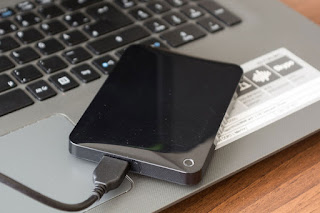Common problems with installing Windows 10, and how to fix them
Windows 10 is an impressive improvement over Windows 8, and until July 29, 2016, it’s a free upgrade for Windows 7 and 8/8.1 users. But any time you upgrade your operating system, you risk something going wrong. Like any complex piece of software, Windows 10 and its installation process are vulnerable to mistakes, glitches, and hardware errors. That being the case, here are some of the most commonly-encountered problems that arise when installing or upgrading to the new version of Windows, and how to solve them.
LOW DISK SAVE
Windows 10 requires quite a bit of free disk space on your hard drive or solid state drive in order to install. The 32-bit version of the OS — used mostly on tablets and less expensive laptops at this point — needs 16GB of free space, the 64-bit version needs 20GB, and if you’re installing from a file stored on your computer itself with the Microsoft upgrade tool, you’ll need an additional 2 to 4GB just for the installation files
If you have a full storage drive, or a small one to begin with, you’ll need to make some room. The quickest way to do this is to uninstall space-hogging programs. Robust, 3D games and complex packages like Adobe Creative Suite take up gigabytes of space in and of themselves. Uninstall them and be sure to back up any save files or settings. Don’t worry, you can re-install them from the installation discs or with a download once Windows 10 is properly set up.
Should you still need, it’s recommended you remove files in the following order: video files, audio files, images of all kinds, then documents and other files. An external USB hard drive is the quickest and easiest way to accomplish this — simply save any files you can’t delete to the external media, and they’ll be easy to restore once you’ve installed Windows 10. Afterward, empty the Recycle Bin to clear the deleted files, or run a program like CCleaner to clear out your browser caches, logs, and other things that take up storage space.
To check your progress, click the Start button, type “This PC,” and click the result. The drive labeled “Windows” is what Windows 10 will install to — make sure you’ve got at least 20GB free, preferably a little more, just to be safe.
ISO IMAGE ISSUES
If you’ve used the Microsoft Media Creation tool to burn a disc or create a bootable USB drive to install Windows 10, it’s possible that the media itself is damaged or corrupt. This will result in a failed or damaged installation. Sadly, it’s extremely difficult or impossible to modify the files once they’re written to the disc or drive. You’ll need to run the tool again to install Windows 10, which may necessitate access to another laptop or installing your older version of Windows again.
If you continue to experience problems after creating multiple installation media and trying to install Windows 10 more than once, you may have a persistent hardware problem. The CD/DVD burner or the USB drive you’re using may be faulty. If possible, try using a different USB drive or an external disc burner. The Windows 10 setup program also allows you to install the operating system directly on the storage drive, with no external discs or drives necessary, so consider mounting the ISO from within your current version of Windows and running the installer directly.
ERROR CODES
Sometimes during the Windows installation process, the program will stop and display an error code. There are hundreds of possible error codes and at least as many potential problems. The best thing to do in this situation is to write down the code — you may not be able to copy it from the display screen — and search the internet for the core problem, and hopefully, a solution.
Here are some of the steps you can take if there’s no reliable information for your specific code:
- Unplug any unnecessary devices from your computer. Laptops should have nothing plugged in at all (except a power cord), and desktops should only have a monitor, mouse, and keyboard attached.
- For desktops, remove or disconnect any unnecessary internal hardware. If your PC includes an integrated graphics card or sound card on the motherboard, remove any standalone cards. Unplug any secondary storage drives (but not the primary OS drive), disc drives, card readers, and extra hardware such as a fan controller or USB extension connected to a PCI port.
- If you’re upgrading your PC and you’ve selected a standard upgrade that preserves your programs, remove unnecessary programs before beginning the installation process. Anti-virus programs and drivers for devices like game controllers seem to have the most trouble during the upgrade process.
- Alternately, simply install the operating system “cleanly,” preserving your personal files but not the programs. To do so, select Custom: Install Windows instead of Upgrade during the setup process (you will need a license code). You can re-install your programs later.
Microsoft also offers a list of potential Windows 10 installation error codes, and what they mean.
INCOMPATIBLE HARDWARE
Windows 10 runs on a variety of hardware, including Atom-based tablets and other low-power systems, but it does have minimum requirements. If your computer has a processor with a speed of less than 1GHz — or RAM totaling less than 1GB for the 32-bit version or 2GB for the 64-bit version — the setup wizard will not allow you to complete the installation. Desktop users can often upgrade their RAM or processor, but very few system will allow you to replace the CPU alone. In that case, you may be out of luck.









0 comments:
Post a Comment